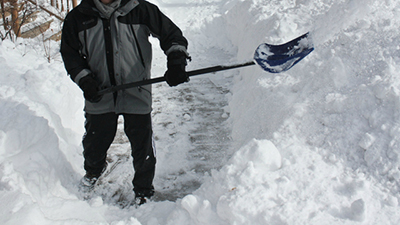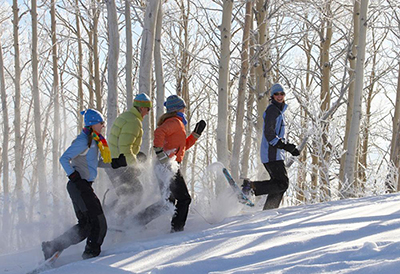As the year enters the winter months, you might know someone who has lamented that with the colder weather they have pain in their back or other regions that intensifies or “acts up.” This is a recurring condition that afflicts many people throughout the country. Fortunately, over the years there have been reliable means devised to combat this uptick in pain, and more people are able to take measures to mitigate and in some cases, prevent it altogether.
To begin with, it helps to try and understand where this back pain could be coming from. It is worth noting that amongst the medical community there is actually no definitive study or established explanation as to why this phenomenon occurs. However, there are a few prominent theories. One of the most common is a process called vasoconstriction, which is the idea that in colder weather the body will naturally draw more blood to the center of the body in an attempt to conserve heat by supporting essential organs like the lungs and heart. As a result of this reduced flow, the blood vessels in areas like the arms, legs, and back will constrict. And when the muscles and tendons in these areas get less blood, they can stiffen which will lead to aches and pains. This can be particularly felt in the back, when support for the spine stiffens up due to this vasoconstriction.

One somewhat contested theory is the effect of barometric pressure on the body, particularly during times of inclement weather. You may have heard someone claim they can tell when a storm is coming through pressure in their joints, or a “feeling” in their bones. While there is currently no established scientific study that confirms a corollary between a drop in pressure and back pain, generations have produced a considerable amount of anecdotal evidence suggesting a connection. As close as most experts can figure, when the barometric pressure drops due to an oncoming storm or change in temperature, there is actually less gravity to hold down or reduce swelling in joints already aggravated by a previous condition or injury. And if swelling is allowed to occur, this produces increased inflammation and pain in the affected areas.
So if we establish that cold weather seems to bring increased back pain for many people throughout the world, what can be done to solve this? Here are a few tips that can help you manage or avoid back pain when the weather turns cold:
Stay Warm Out There
While it might sound dully obvious, one of the most important measures to take is keeping yourself warm. Preventing constriction of your muscles and blood vessels due to cold will go a long way in keeping pain from flaring up in your back. You want to make sure you are taking the time to don the appropriate amount of clothing layers, even if you think you can power through it, or possibly are just going to be stepping outside for a few moments. You may want to consider upping the number of blankets on your bed, and possibly invest in an electric blanket to ensure you are staying sufficiently warm even while you are asleep.

Equip for the Season
Another observation that has been made is that these issues can be highly environmental. If the cold weather brings snow, this can create situations and risks that are not an issue during the rest of the year. If conditions become icy then moving around outside opens up the risk of slips and falls which will undoubtedly contribute to back pain. Even normal winter upkeep activities like shoveling the walk or driveway can place undue stress on the body which can open up opportunities for physical injury not encountered during any other part of the year. It is also important to make sure that you have specialized winter equipment if the environment demands it. Shoveling the walk in winter boots with sufficient tread may significantly prevent injury you might be opening yourself up to if you attempt this chore in regular sneakers.

Nutrition and Wellness
One possible angle to consider is nutritional supplements during the winter. Many people encounter a vitamin D deficiency during colder months due to reduced sunlight. Vitamin D levels can affect how sensitive you are to back pain. Some have also reported relief by supplementing omega-3 fatty acids. Because the levels of these substances affect everyone differently, it may be important to consult your doctor to determine correct supplements and dosage for your personal needs. If you need a more direct, hands-on approach to relieving winter back pain, some rely on getting a massage or a chiropractic adjustment to tide them over until things turn warmer.

Do Not Stop Exercising
Another thing to consider is making sure you are staying active as possible. During “normal” conditions many people rely on exercise and daily physical activity to keep themselves well, both physically and mentally. While it is highly understandable wanting to scale back or canceling a workout due to cold or icy weather, this drop in activity can cause your body to weaken and become more prone to injury or even depression. Staying active in your home or even looking into a gym or athletic club can make sure you are getting the exercise you need to continue functioning as normal.

If you have pain that seems to ebb and flow with the seasons, it can feel oppressively inevitable. However, you may rest assured that you are not alone in this. Taking stock of your environment and assuming some specific seasonal changes may go a long way in helping with your condition. It may also be advisable to contact and discuss options with a healthcare professional for further management. With some preparation, you may be able to enjoy your winter without the back pain that can come with it.

